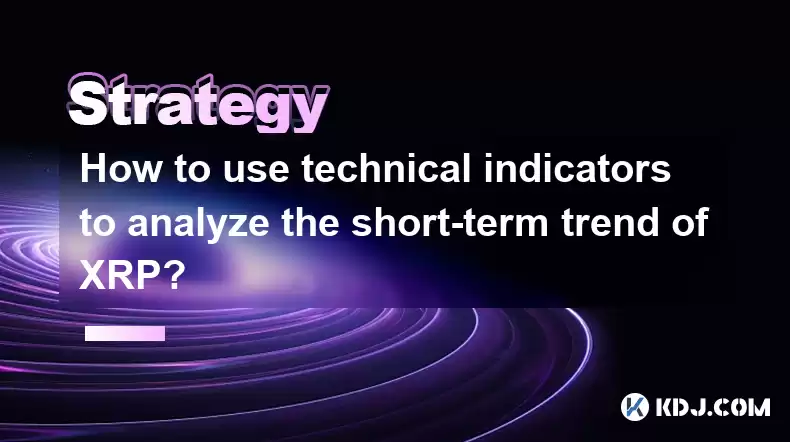-
 Bitcoin
Bitcoin $117500
2.15% -
 Ethereum
Ethereum $3911
6.19% -
 XRP
XRP $3.316
10.79% -
 Tether USDt
Tether USDt $1.000
0.01% -
 BNB
BNB $787.2
2.24% -
 Solana
Solana $175.2
4.15% -
 USDC
USDC $0.9999
0.00% -
 Dogecoin
Dogecoin $0.2225
8.40% -
 TRON
TRON $0.3383
0.28% -
 Cardano
Cardano $0.7868
6.02% -
 Stellar
Stellar $0.4382
9.34% -
 Hyperliquid
Hyperliquid $40.92
7.56% -
 Sui
Sui $3.764
7.63% -
 Chainlink
Chainlink $18.48
10.66% -
 Bitcoin Cash
Bitcoin Cash $582.1
1.88% -
 Hedera
Hedera $0.2601
6.30% -
 Avalanche
Avalanche $23.33
4.94% -
 Ethena USDe
Ethena USDe $1.001
0.02% -
 Litecoin
Litecoin $122.3
2.04% -
 UNUS SED LEO
UNUS SED LEO $8.969
-0.27% -
 Toncoin
Toncoin $3.339
0.86% -
 Shiba Inu
Shiba Inu $0.00001287
4.30% -
 Uniswap
Uniswap $10.43
7.38% -
 Polkadot
Polkadot $3.861
5.08% -
 Dai
Dai $1.000
0.02% -
 Bitget Token
Bitget Token $4.513
3.41% -
 Monero
Monero $267.7
-6.18% -
 Cronos
Cronos $0.1499
4.14% -
 Pepe
Pepe $0.00001110
5.15% -
 Aave
Aave $284.9
8.28%
How to use technical indicators to analyze the short-term trend of XRP?
Use moving averages, RSI, Bollinger Bands, and MACD to analyze XRP's short-term trend, combining them for a comprehensive view and informed trading decisions.
Apr 19, 2025 at 08:56 am

How to use technical indicators to analyze the short-term trend of XRP?
Analyzing the short-term trend of XRP using technical indicators can be an effective way to make informed trading decisions. Technical indicators help traders predict future price movements based on historical data, providing insights into potential trends and reversals. In this article, we will explore several key technical indicators and how to use them to analyze the short-term trend of XRP.
Understanding Technical Indicators
Before diving into specific indicators, it's crucial to understand what technical indicators are and how they work. Technical indicators are mathematical calculations based on the price, volume, or open interest of a security. They are used to forecast future price movements by analyzing past patterns. For short-term trading of XRP, traders often use a combination of indicators to get a more comprehensive view of the market.
Moving Averages for XRP Trend Analysis
Moving averages are one of the most commonly used indicators for identifying trends. They smooth out price data to create a single flowing line, making it easier to identify the direction of the trend. For short-term analysis of XRP, traders typically use two types of moving averages: the Simple Moving Average (SMA) and the Exponential Moving Average (EMA).
- Simple Moving Average (SMA): The SMA is calculated by adding up the closing prices of XRP over a certain number of periods and then dividing by that number. For short-term analysis, a 20-day SMA is often used.
- Exponential Moving Average (EMA): The EMA gives more weight to recent prices, making it more responsive to new information. A 12-day or 26-day EMA is commonly used for short-term XRP analysis.
To use moving averages for short-term trend analysis of XRP, follow these steps:
- Plot the 20-day SMA and the 12-day EMA on the XRP price chart.
- Observe the crossover points: When the 12-day EMA crosses above the 20-day SMA, it indicates a potential bullish trend. Conversely, when the 12-day EMA crosses below the 20-day SMA, it suggests a bearish trend.
Relative Strength Index (RSI) for XRP Momentum
The Relative Strength Index (RSI) is a momentum oscillator that measures the speed and change of price movements. It ranges from 0 to 100 and is typically used to identify overbought or oversold conditions in XRP. For short-term analysis, an RSI period of 14 is commonly used.
- Overbought condition: An RSI value above 70 suggests that XRP may be overbought and due for a price correction.
- Oversold condition: An RSI value below 30 indicates that XRP may be oversold and could be poised for a price rebound.
To use RSI for short-term trend analysis of XRP, follow these steps:
- Plot the RSI indicator on the XRP price chart with a period setting of 14.
- Monitor the RSI levels: Look for instances where the RSI crosses above 70 or below 30. These levels can signal potential trend reversals.
- Combine with price action: Use RSI in conjunction with price action to confirm potential trend changes. For example, if XRP's price is making lower highs while the RSI is making higher highs, it could indicate a bullish divergence and a potential trend reversal.
Bollinger Bands for XRP Volatility
Bollinger Bands are a volatility indicator that consists of a middle band (usually a 20-day SMA) and two outer bands that are standard deviations away from the middle band. They help traders identify periods of high and low volatility in XRP, which can signal potential breakouts or trend reversals.
- Narrowing bands: When the Bollinger Bands contract, it indicates low volatility and suggests that a significant price move may be imminent.
- Widening bands: When the Bollinger Bands expand, it indicates high volatility and can confirm the strength of a current trend.
To use Bollinger Bands for short-term trend analysis of XRP, follow these steps:
- Plot the Bollinger Bands on the XRP price chart with a period setting of 20 and a standard deviation of 2.
- Monitor the bands: Look for periods where the bands narrow, indicating potential upcoming volatility. Also, observe when XRP's price touches or breaks through the upper or lower bands, which can signal overbought or oversold conditions.
- Combine with other indicators: Use Bollinger Bands in conjunction with other indicators, such as moving averages or RSI, to confirm potential trend changes. For example, if XRP's price breaks above the upper Bollinger Band and the RSI is above 70, it could indicate a strong bullish trend.
MACD for XRP Trend Confirmation
The Moving Average Convergence Divergence (MACD) is a trend-following momentum indicator that shows the relationship between two moving averages of XRP's price. It consists of the MACD line, the signal line, and the histogram. For short-term analysis, the MACD can help confirm trend changes and identify potential entry and exit points.
- MACD line: Calculated as the difference between the 12-day EMA and the 26-day EMA.
- Signal line: A 9-day EMA of the MACD line.
- Histogram: The difference between the MACD line and the signal line.
To use the MACD for short-term trend analysis of XRP, follow these steps:
- Plot the MACD indicator on the XRP price chart with the standard settings (12, 26, 9).
- Monitor the MACD line and signal line: When the MACD line crosses above the signal line, it indicates a bullish trend. Conversely, when the MACD line crosses below the signal line, it suggests a bearish trend.
- Observe the histogram: The histogram can provide additional insights into the strength of the trend. A rising histogram indicates increasing momentum, while a falling histogram suggests decreasing momentum.
- Combine with price action: Use the MACD in conjunction with price action to confirm potential trend changes. For example, if XRP's price breaks above a resistance level and the MACD line crosses above the signal line, it could confirm a bullish trend.
Combining Indicators for a Comprehensive Analysis
While each of these indicators can be useful on its own, combining them can provide a more comprehensive view of XRP's short-term trend. By using a combination of moving averages, RSI, Bollinger Bands, and MACD, traders can increase the accuracy of their analysis and make more informed trading decisions.
To combine these indicators for short-term trend analysis of XRP, follow these steps:
- Plot all the indicators (20-day SMA, 12-day EMA, RSI, Bollinger Bands, and MACD) on the XRP price chart.
- Identify trend signals: Look for instances where multiple indicators align to confirm a trend. For example, if the 12-day EMA crosses above the 20-day SMA, the RSI is above 50, the Bollinger Bands are widening, and the MACD line crosses above the signal line, it strongly suggests a bullish trend.
- Monitor for divergences: Pay attention to divergences between the price and the indicators. For example, if XRP's price is making lower lows while the RSI is making higher lows, it could indicate a bullish divergence and a potential trend reversal.
- Adjust based on market conditions: Be flexible and adjust your analysis based on current market conditions. For example, during periods of high volatility, the Bollinger Bands may be more useful, while during periods of low volatility, the MACD and moving averages may be more effective.
Frequently Asked Questions
Q1: Can technical indicators predict XRP's price with 100% accuracy?
A1: No, technical indicators are not foolproof and cannot predict XRP's price with 100% accuracy. They provide insights based on historical data and patterns, but market conditions can change unexpectedly, and other factors such as news events and market sentiment can influence price movements.
Q2: How often should I check the indicators for short-term XRP trading?
A2: For short-term trading, it's recommended to check the indicators regularly, ideally every few hours or at least daily. This allows you to stay updated on the latest market trends and make timely trading decisions.
Q3: Are there any specific indicators that work better for XRP compared to other cryptocurrencies?
A3: While the indicators discussed in this article are widely used for various cryptocurrencies, including XRP, their effectiveness can vary based on the specific market dynamics of XRP. It's important to backtest and validate the indicators using historical data specific to XRP to determine their reliability.
Q4: Can I use these indicators for long-term analysis of XRP?
A4: While the indicators discussed in this article are primarily used for short-term analysis, they can also be adapted for long-term analysis by adjusting the time periods. For example, using longer moving averages and RSI periods can help identify longer-term trends in XRP's price.
Disclaimer:info@kdj.com
The information provided is not trading advice. kdj.com does not assume any responsibility for any investments made based on the information provided in this article. Cryptocurrencies are highly volatile and it is highly recommended that you invest with caution after thorough research!
If you believe that the content used on this website infringes your copyright, please contact us immediately (info@kdj.com) and we will delete it promptly.
- Stablecoins, Hong Kong, and On-Chain Finance: Navigating the Regulatory Maze
- 2025-08-08 12:30:12
- Tron's Sell-Off Spurs Altcoin Shift: What's Next for TRX?
- 2025-08-08 08:30:12
- Euler, DeFi, and Coinbase: A New York Minute on the Latest Buzz
- 2025-08-08 12:30:12
- RUVI Presale: Is the Growth Potential Real?
- 2025-08-08 09:10:12
- Sleep Token's US Takeover: Thornhill Rides the 'Even In Arcadia' Wave
- 2025-08-08 08:30:12
- FTT Token's Wild Ride: Creditor Repayments vs. Market Drop - A New Yorker's Take
- 2025-08-08 07:10:12
Related knowledge

How to read cryptocurrency charts and use technical analysis?
Aug 08,2025 at 11:08am
Understanding the Basics of Cryptocurrency ChartsCryptocurrency charts are graphical representations of price movements over time. These charts are es...

How to avoid common crypto investment mistakes?
Jul 13,2025 at 01:35am
Understanding the Risks of Crypto InvestmentInvesting in cryptocurrency can be highly rewarding, but it also comes with significant risks. One of the ...

What is a long-short crypto strategy?
Jul 15,2025 at 10:56am
Understanding the Basics of a Long-Short Crypto StrategyA long-short crypto strategy is an investment approach where traders simultaneously take long ...

What is a long-short crypto strategy?
Jul 11,2025 at 01:28pm
Understanding the Basics of Long-Short Crypto StrategyA long-short crypto strategy is an investment approach where traders take both long and short po...

How to use the RSI indicator for crypto?
Jul 12,2025 at 03:56pm
Understanding the RSI Indicator in Cryptocurrency TradingThe Relative Strength Index (RSI) is a momentum oscillator used to measure the speed and chan...

Is copy trading a good strategy for crypto beginners?
Jul 12,2025 at 08:28am
Understanding Copy Trading in the Cryptocurrency MarketCopy trading is a strategy where novice traders replicate the trades of experienced investors a...

How to read cryptocurrency charts and use technical analysis?
Aug 08,2025 at 11:08am
Understanding the Basics of Cryptocurrency ChartsCryptocurrency charts are graphical representations of price movements over time. These charts are es...

How to avoid common crypto investment mistakes?
Jul 13,2025 at 01:35am
Understanding the Risks of Crypto InvestmentInvesting in cryptocurrency can be highly rewarding, but it also comes with significant risks. One of the ...

What is a long-short crypto strategy?
Jul 15,2025 at 10:56am
Understanding the Basics of a Long-Short Crypto StrategyA long-short crypto strategy is an investment approach where traders simultaneously take long ...

What is a long-short crypto strategy?
Jul 11,2025 at 01:28pm
Understanding the Basics of Long-Short Crypto StrategyA long-short crypto strategy is an investment approach where traders take both long and short po...

How to use the RSI indicator for crypto?
Jul 12,2025 at 03:56pm
Understanding the RSI Indicator in Cryptocurrency TradingThe Relative Strength Index (RSI) is a momentum oscillator used to measure the speed and chan...

Is copy trading a good strategy for crypto beginners?
Jul 12,2025 at 08:28am
Understanding Copy Trading in the Cryptocurrency MarketCopy trading is a strategy where novice traders replicate the trades of experienced investors a...
See all articles

























































































